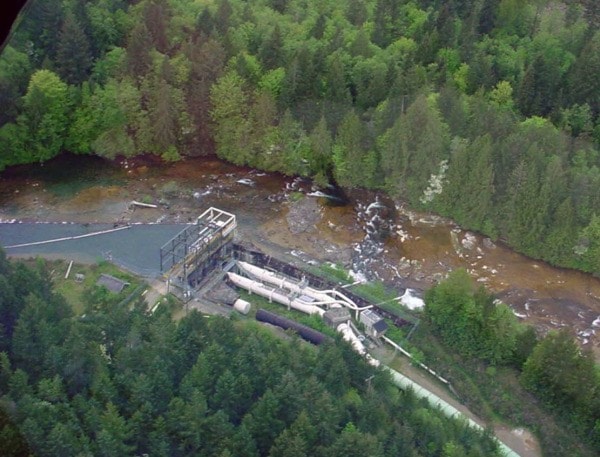The Comox Valley Regional District’s (CVRD) role is to provide a reliable source of safe, high-quality drinking water to homes and businesses within some of its member municipalities and electoral areas.
This includes acquiring and maintaining the water supply, treating it to ensure quality, and delivering it — all at a reasonable cost.
Water source
The Comox Valley water system provides water from Comox Lake via the Puntledge River to approximately 40,000 people. The CVRD holds a conditional water license, issued by the Ministry of Environment, permitting a maximum annual diversion of 9,092,180 cubic metres and a maximum daily diversion of up to 70,464 cubic metres.
Shared resource
Water in the CVRD is a shared resource and needs to be used efficiently.
The water from Comox Lake and the Puntledge River is licensed and used primarily by BC Hydro for electricity generation and by Fisheries and Oceans Canada for hatchery purposes and other
habitat projects. In addition, the water source has numerous important ecological values and uses.
Water system
Water taken from the Puntledge River flows through a network of chlorination facilities, reservoirs, pumping stations and transmission mains or pipes.
There are several water systems at work in our region. The CVRD supplies bulk water to distribution systems operated by the City of Courtenay and Town of Comox. The CVRD also manages and
operates the following electoral area water systems in the Comox Valley:
• Arden Water Local Service Area
• Comox Valley Water Local Service Area
• Greaves Crescent Water Local Service Area
• England Road Water Local Service Area
• Marsden/Camco Water Local Service Area.
Water infrastructure
The Comox Valley Water System involves a number of key systems to provide residents with their water, including:
• Reservoirs
The West Courtenay, Marsden, Comox, Crown Isle and East Courtenay (twinning project underway) reservoirs are required for fire storage, emergency storage, water pressure and to balance flow throughout the day (including meeting peak hourly demand).
• Pump Stations
The Ryan and Dingwall pump stations are required to distribute water throughout the supply system when gravity supply is not possible. The Puntledge River pump station is the Comox Valley’s backup source during periods when BC Hydro is undertaking maintenance or repairs on the penstock.
• Chlorination Facility
The chlorination station on the Puntledge River is required to disinfect the water to safe standards set out in the Canadian Drinking Water Guidelines.
• Supply Watermains
Supply, or transmission, watermains are required to distribute large volumes of water throughout the system, for example from the chlorination station to the reservoirs.
Quality and treatment
Drinking water is tested regularly to ensure it meets Canadian and provincial drinking water standards and guidelines.
To ensure its ongoing quality, the CVRD continues to upgrade the existing treatment and distribution systems.
In 2005, the CVRD completed an advanced chlorination station to disinfect drinking water for the Comox Valley Water System. In 2011, the CVRD is undertaking engineering of ultraviolet light (UV) disinfection
to further improve water quality.
Working to protect Comox Lake
Many people are surprised to learn that this water source — Comox Lake — is an unprotected watershed. To address this issue and develop an action plan for the protection of this watershed, the CVRD initiated a Watershed Assessment for Comox Lake in 2006. Working with the Vancouver Island Health Authority, the CVRD and other groups that use the watershed are working on mitigating high level risks or threats to the current and future quality of the water.
— Comox Valley Regional District
